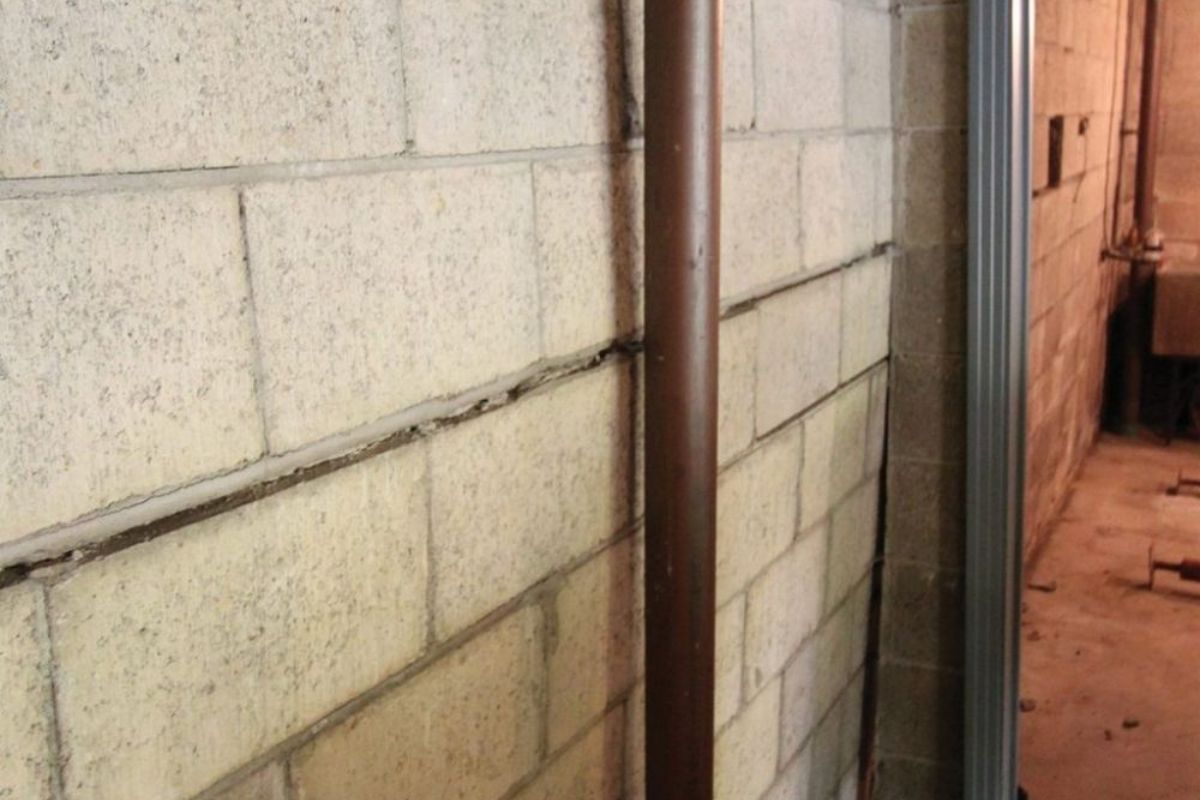Bowed basement walls signal structural problems originating with your home’s foundation that are likely serious. When at least one of your walls is bowing inward, there is a chance the damage could spread. Acting quickly will help ensure that you get this problem solved right the first time.
Before you get your walls repaired, you’ll benefit from knowing a little more about what is at stake. Read on to learn more about the causes of and solutions to bowed walls.
What Do You Need to Watch for When Your Basement Walls Are Bowing?
Excessive moisture surrounding your house is the most common reason for walls to start bowing. Surprisingly, the culprit doesn’t have to be a major leak. Natural groundwater is capable of exerting heavy pressure in and of itself.
Factors like poor drainage or excessive runoff from a recent storm contribute to a higher moisture amount. This type of pressure is known as “hydrostatic” pressure and is a major problem for properties with wet soil. The amount of pressure involved is roughly equivalent to the weight of a car, which is enough to cause substantial damage.
The pressure over time is what creates the damaging buckling, bowing, and cracking that prompts service calls from foundation experts. Your whole home’s structural integrity is at risk because the load-bearing capacity of the walls weakens. The costs of repairs for damage that bowing causes can get quite high if not corrected soon enough.
Options for Repairing Bowed Basement Walls
There are several options for repairing bowed basement walls and many of them are relatively affordable. These repairs can prevent further deterioration, restore your home’s structural integrity, and also help make cosmetic improvements.
Getting the help of foundation experts for your buckling walls ensures that the solution is the right one for the circumstances. Some of the solutions that may help for your circumstances include:
- Installing I-beams to provide reinforcement for the house’s walls
- Removing the clay under the foundation and replacing it with gravel
- Straightening the walls or otherwise repairing damage
How is Hydrostatic Pressure Addressed?
Even if you decide to have I-beams or similar measures are taken, the underlying hydrostatic pressure needs to be addressed to avoid further problems. One helpful thing to keep in mind is that hydrostatic pressure is a symptom of another problem. Here are some of the root causes behind this type of pressure:
- Unseen plumbing leaks because of damage or poor installation. A hidden leak can persist for a long time before discovery, increasing the chances of the damage being substantial.
- Heavier patio paving or driveway elements can also put pressure on a foundation. Homeowners adding anything new would do well to keep the weight capacity in mind.
- Tree roots that have gotten into your foundation may pose problems. Any large trees that are not a substantial distance from your house are suspect in these circumstances.
- Heavy rainfall or flooding can lead t wall bowing. You might see evidence of excess water after an especially snowy winter.
- Inadequate grading or poor construction may also play a role. Sometimes, grading issues on an adjacent property may affect your home’s foundation.
How to Get the Help You Need
An assessment from a foundation specialist is essential if you have bowed walls or any other evidence of foundation damage. Staying on top of any issues that affect your home’s structural integrity is important, and KC Pier has the resources to make sure your home gets the right type of repair. We handle the situations that lead to bowed basement walls and will work with you to find the right solution, so contact us today to find out how we can help you.

